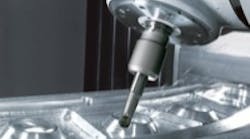Traditional methods of measuring the return on investment for a new piece of equipment are being replaced. Rather than measuring returns solely on capacity and cost effectiveness, factors such as competitiveness also are being used to determine the overall returns that a new piece of equipment provides.
When the financial department looks at the cost justification for a new piece of equipment it usually wants to see a return of at least 15 percent — the typical cost of capital plus burden rate — over a given payback period. A normal payback period used to be five years, but today's increased competition for capital is forcing expected payback periods to be as short as two years. While there are several cost justification methods, including the internal rate of return, the accounting rate of return, the net present value and other types of discounted cash flow analyses, all of them focus on reduced labor, inventory or operating costs. But how do you justify buying a machine that does not lower costs, yet is critical to a company's survival?
"What we are seeing more frequently are customers using a capabilities-based return on investment calculation, rather than the more traditional capacity-oriented justification. They're looking at utilizing better technologies, improved methods, systems and automation to create not only cost savings but also shorter process times, greater flexibility and elimination of work in process," said Mark Rentschler, marketing manager for Makino (www.makino.com).
"We can provide customers with standard cost analysis on our machines that they can plug into whatever ROI calculations they do. Frequently a customer will be looking at a machine to use for a specific contract, but we also have customers who are looking at how upgrading their equipment will increase their margin, their capacity or their competitiveness," said Jeff Hahn, marketing manager at Mitsubishi Laser Corp. (www.mitsubishi-laser.com).
"We're not afraid to go out and buy an expensive piece of equipment just to make one part," said Jon Polliard, senior manufacturing engineer at H.M. Dunn Company, Inc. (www.hmdunn.com), an aerospace parts manufacturer in Euless, Texas. "We bought a $1.5 million Giddings and Lewis (www.giddings.com) boring mill for a contract to machine a titanium part for the F-22 jet fighter. Someplace two or three years down the road this machine will be paid for and then we'll have this big, beautiful boring mill sitting here in the shop ready to do whatever we need it to do." Polliard added that just buying new equipment is not enough. "You have to keep up with technology. There were two machine shops just a few blocks from us that have gone out of business because they bought new equipment and didn't know how to use it properly," said Polliard.
The 2006 American Machinist Benchmarking Survey asked companies to describe their return on invested capital (net operating profit after taxes/capital invested). The average ROI for all shops in 2006 was 26.6 percent, up from 18.1 percent in 2003. The top shops (those who perform in the top 20 percent) reported an ROI of 34.6 percent, up from 21.4 percent in 2003, while the other shops reported an average of only 19 percent, up from 14.8 percent in 2003.
The average level of capital equipment spending for all shops (as a percentage of sales for 2005) was 8.1 percent. Top shops spent 10.5 percent while the other shops spent 7.3 percent. Almost half of all shops said they anticipated an increase in capital equipment spending for 2006 versus 2005. 61.7 percent of the top shops anticipated increasing capital spending compared to only 46.1 percent of the other shops.
| Committed to improving your shop operations? American Machinist's Machine Shop Workshop is November 7-9, 2007. Learn how to:
|






